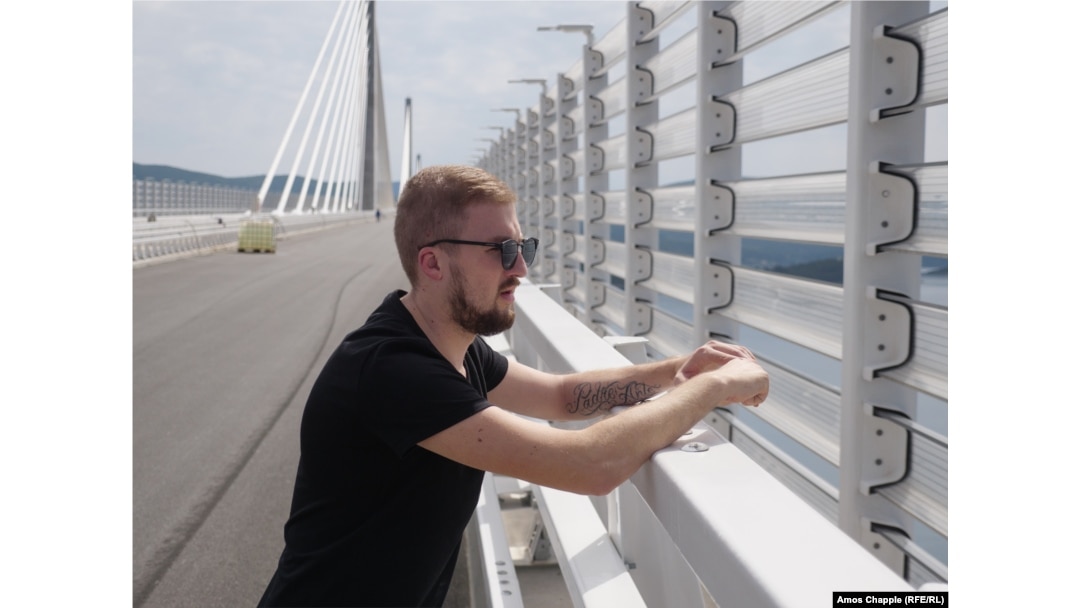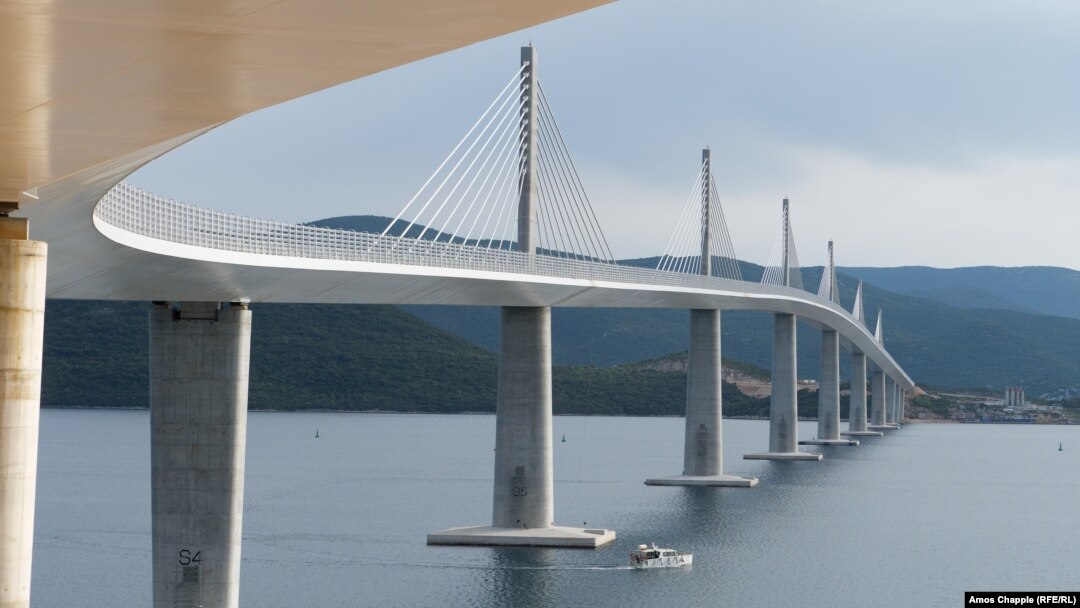Croatia's Peljesac Bridge officially opens on July 26, allowing travelers to skirt border checkpoints. But not everyone is excited about the spectacular structure.
From the unused tarmac of the Peljesac Bridge, Ivo Jerkovic looks down at the coastal hamlet of Komarna, where he serves as mayor.
"When the bridge opens, we will be in the center of a circle," he said, pointing toward the tourist towns of Dubrovnik and Mostar, then across the Adriatic to the mountainous Peljesac Peninsula.
"I think this [tourist] season will be very good," he concludes, adding that "after two years of COVID, we are ready."

Ivo Jerkovic
The 2.4-kilometer bridge Jerkovic is standing on is set to dramatically untangle land routes along the Balkan coast when it opens on July 26. Drivers of the coastal road of southern Croatia currently have to cross a border checkpoint into Bosnia-Herzegovina before reentering EU territory around 9 kilometers later.
With Croatia due for admission to the Schengen area in 2024, the Bosnian border blip was set to become a massive hurdle. A requirement of Schengen membership is that travelers and their vehicles are checked both on entry to, and exit from, Schengen territory. An additional checkpoint on Bosnia's Neum coastal strip would worsen already lengthy traffic backlogs during baking-hot summer months.

Chinese workers on one of the bridge piers in May 2022.
Several other options for skipping Bosnian territory were floated before the bridge became a reality, including a ferry service, an undersea tunnel, and a "sealed" highway corridor through Bosnia. Work on the bridge, designed by Slovenian Marjan Pipenbaher, began in 2018 after the EU agreed to cover 85 percent of the cost, with Croatia paying the remaining 15 percent of the $438 million project.
The China Road and Bridge Corporation won a tender for the four-lane bridge's construction, with an aim to complete the span by 2021. Chinese workers spend up to a year at a time housed in local guesthouses, and the construction teams could be seen fishing and playing badminton between shifts preparing the bridge for its grand opening.
A Croatian family enjoys a picnic near the Peljesac Bridge.
In Bosnia's Neum, which will lose much of its through traffic when the bridge opens, local predictions about what the future holds run the gamut. Nikita, a waiter in the Motel More restaurant on Bosnia's brief strip of coastal highway, is not optimistic.
"This road is life," he said in broken English, concluding that when the bridge opens and vacationers are able to drive around Neum, his business, which relies mostly on passing tourists, will be "finished."
Away from the highway there is less anxiety.
In the City Bar and Cafe near the Neum waterfront, owner Davor is hopeful that opening easy access to the beaches of the Peljesac Peninsula will lure more Bosnians down to the coast, and points out a section of a major new road about to open that will shorten the trip south from Mostar to Neum.
While acknowledging businesses that rely mostly on Croatia-bound traffic will suffer, he predicted, "I think away from the highway not much will happen," adding, "Some people are just scared of change."
Chinese workers on site at the northern end of the bridge.
In Croatia's Komarna, locals are preparing for an influx of tourists this summer. The picturesque village, with its fishing boats bobbing on the peacock-colored Adriatic Sea, will be in full view of drivers on the bridge through its transparent railings, meaning the obscure village is about to effectively become a billboard for itself.
The Croatian town of Komarna, with the Peljesac Bridge in background.
Ivo Jerkovic is already rebranding some of his businesses in the town. The restaurant he runs in Komarna, which was used to feed workers though the winter, will soon reopen with a new name to reference the spectacular view from its terrace: The Bridge.


